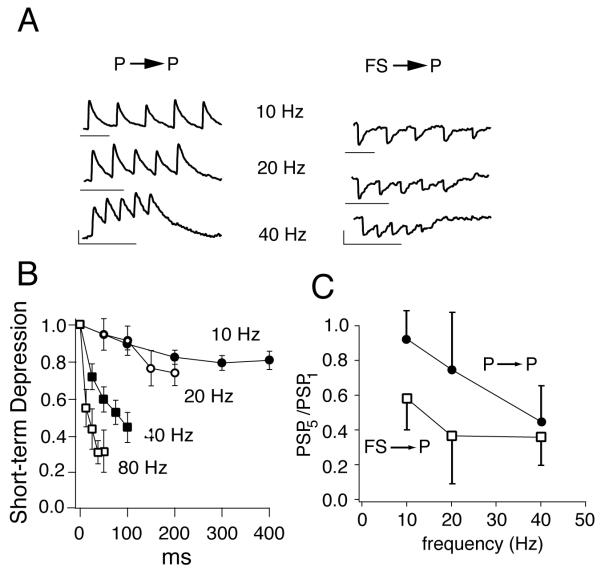Fig. 4.
Dependence of short-term plasticity on stimulus frequency. (A) Left, representative excitatory postsynaptic potentials evoked in a fast spiking (FS) interneuron following repetitive stimulation of a presynaptic pyramidal cell (P) at different frequencies. Right, Inhibitory postsynaptic potentials evoked in P cells following stimulation of presynaptic FS cells. Vertical scale bars: 0.5 mV; horizontal: 100 ms. (B) plot of successive synaptic potential amplitudes during the train at different frequencies for P-to-P connections. Amplitudes are normalized to the amplitude of the first synaptic potential in the train. (C) Average short term synaptic depression of the 5th synaptic potential in the train relative to the 1st as a function of stimulus frequency for P to P and FS to P connections. Adapted from Oswald & Reyes, 2008, 2010.

